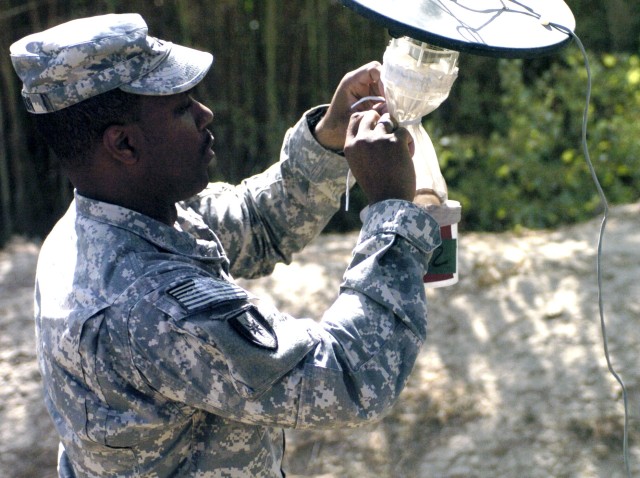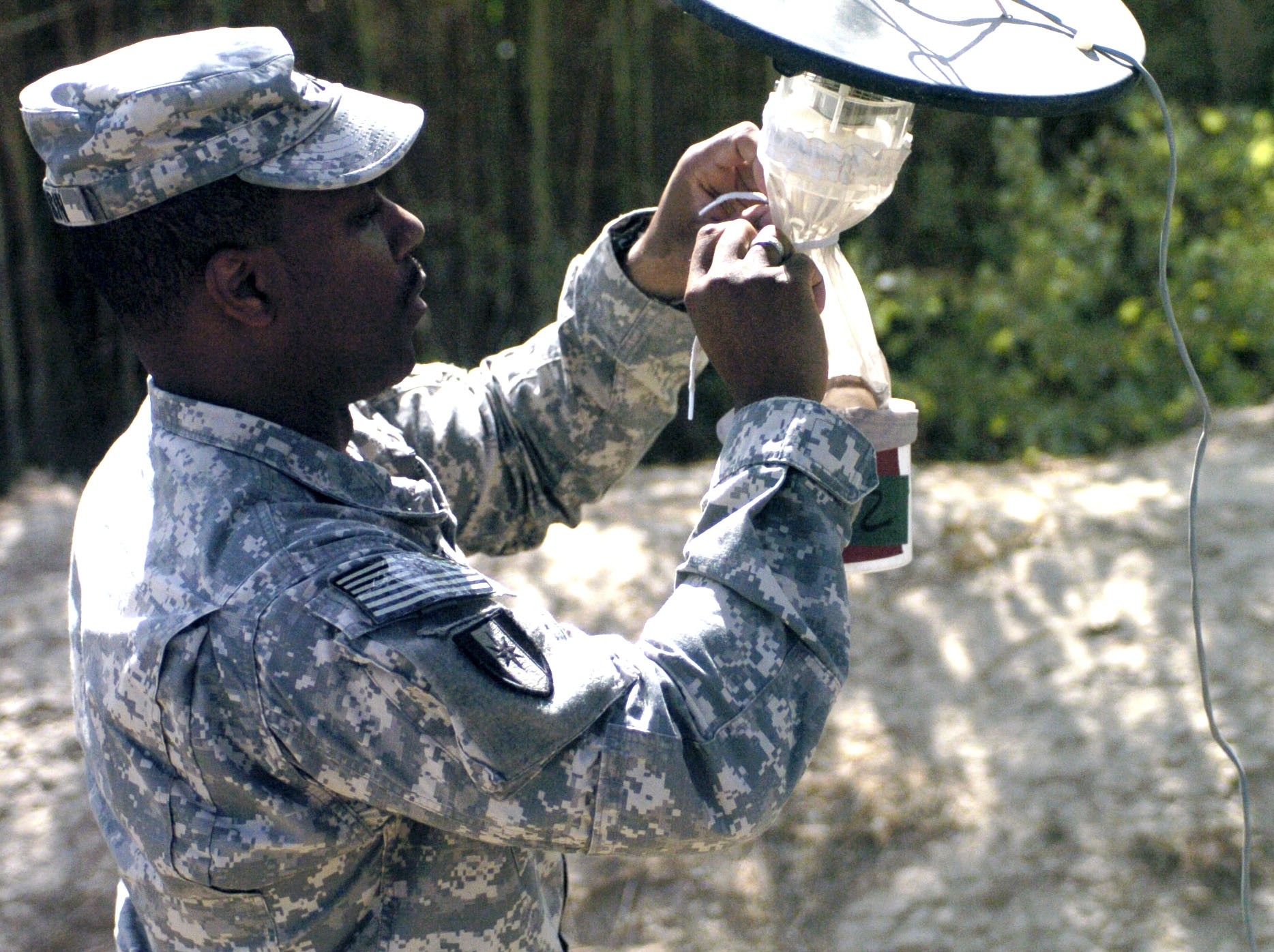
The childhood song 'Shoo fly, don't bother me' might make light of the annoyance of pesky insects, but while in Iraq, insects can be much more than an annoyance. Mosquitoes and sand flies can carry harmful diseases such as malaria, West Nile virus and leishmaniasis. Soldiers are battling these miniature invaders on Victory Base Complex.
Vector Control is one of the primary combatants in the ongoing struggle against potentially harmful pests. "We set out traps to locate breeding areas and areas of high population," said 1st Lt. Erik S. Foster, entomologist, 345th Medical Detachment. "Once we find the areas, we get with KBR Vector Control, so they can conduct spraying or fogging to bring the problem area under control."
Kellogg Brown & Root uses truck-mounted foggers called ultra low volume foggers that emit a very small amount of pesticide, harmless to humans, but fatal to insects, Foster said. "The problem is this is only effective against adults in the air, and must be repeated three or four days in a row to impact the insect population.
ULVs are not the only weapon in Vector Control's arsenal. They also treat stagnant water, the breeding place for many insects, with larvacide. "There are many kinds of larvacides available," Foster said, "there are ones designed to inhibit growth of the larva so that they will never malt into adults, or there are ones that simply kill the larva before they have the chance to reach maturity."
However, Vector Control Soldiers are not the only ones with the ability to battle against insects. "Soldiers can protect themselves by using bug repellents and treating there uniforms in the 'shake and bake' kits provided to them before deployment," Foster said. "The truth is most people don't use repellents."
The bad news is that the insect population is just starting to emerge. "When it really starts to get hot, its going to get bad," Foster said. "We are doing everything we can to keep the populations at a reasonable level."

Social Sharing